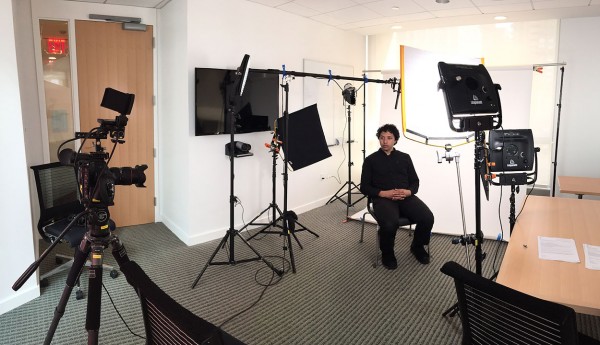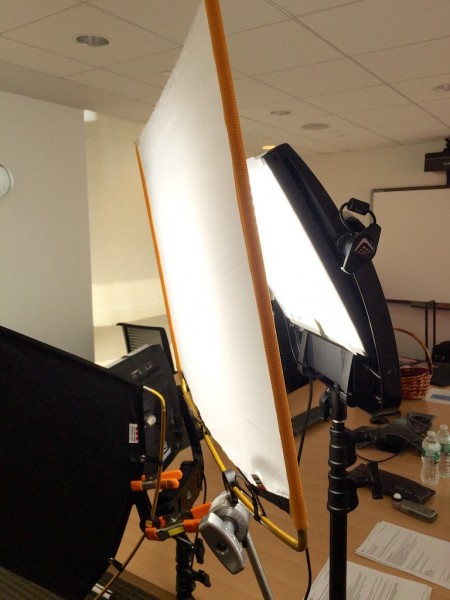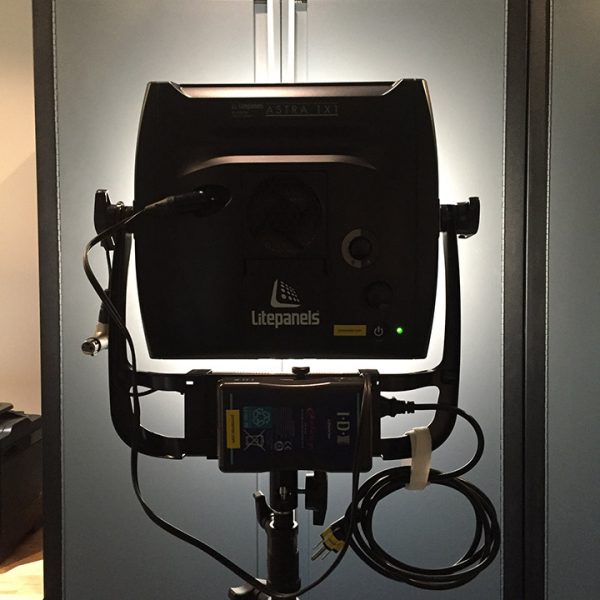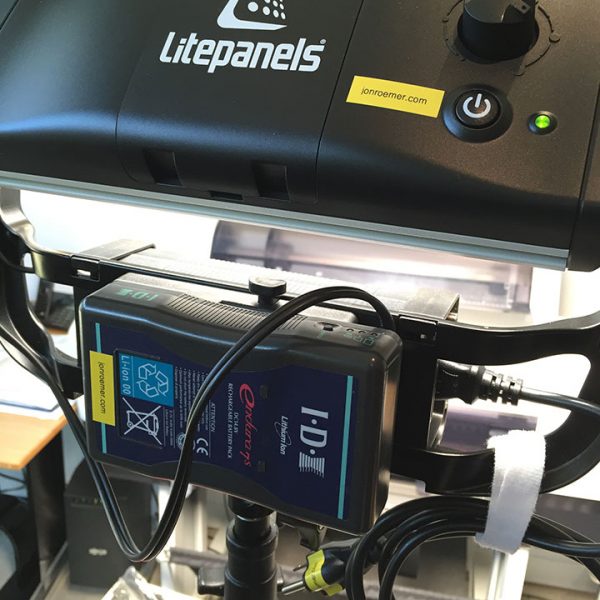Guest post by Jon Roemer:

The Litepanels Astra, their second generation 1×1 LED light, is now available and after reading about its improved performance I decided to give it a test.
I used recently used them on a project where I was viewing some of the footage on site. The second the files opened in FCPX there was a “wow” moment. The improved color rendering of the Astra hit me immediately.


If you have been working with the older Litepanels 1×1 panels the difference is obvious. To confirm this, I ran more quick tests of the Astra against other lights.
Disclaimer: I was not trained as a DP. Some may feel these tests have too many variables to be accurate. My mileage varies; yours may, too. These were shot in my studio during the day and as you’ll see there was some ambient spillage in the background from the exterior daylight (I cannot block out all the light.)
All tests were shot on a Canon C300 in C-log and a slight grade (for tone, not color) was added in post. For each light a custom white balance was done on the raw light with no diffusion, using a WhiBal G7 White Balance Card filling the frame.
Litepanels Astra Bi-Color vs 1st generation 1×1 Daylight Spot:
In this test I used the same light for key & fill. The color temperature of the Astra was set to full daylight. I tested with both lights set as direct light with no diffusion. Then I tested with a Matthews Road Rag Diffuser on the key light, and then each set-up with X-rite ColorChecker Passport visible in shot.
Litepanels Astra Bi-Color vs. 1st Gen 1×1 from Jon Roemer on Vimeo.
Litepanels Astra Bi-Color vs. 1st Gen 1×1 Daylight Spot, Sola 4, Sola ENG, & Lowel Omni Lights comparison:
I used the same light for key and fill, except for the Sola 4 where I had to use an Astra bi-color for fill. Again the Bi-color Astra was set to full daylight. I tested with all lights as direct light (no diffusion) except for the Lowell Omni-lights. (The Omni-light is an inexpensive tungsten light which has been around for decades. It is in the mix to give a sense of what the standard for color rendering looks like.)
They had a 1-stop ND + 250 diffuser on the key, a 2-stop ND + 250 diffuser on the fill. I followed this with a test with all lights shot through the Road Rags Diffuser except the Omni (it already had diffusion on it.) The Sola ENG could not be tested with the Road Rags diffuser as it was not powerful enough to shoot through the diffuser and still overpower the ambient.
Litepanels Astra Bi-Color vs 1st Gen 1×1, Sola 4, Sola ENG, & Lowel Omni Lights from Jon Roemer on Vimeo.
My goal was to confirm what I thought I was seeing when using the Astras – that there is much better color rendering of skin tones. I think you see that in the videos; the reds, oranges, and pinks are vastly improved, not only in the skin tones but in the model’s hair and dress as well.
The Sola 4, a 4″ fresnel light made by Litepanels, comes very close to the Astra in color. This makes sense as the Sola 4 has newer LEDs in it.
The first generation 1×1 and the Sola ENG lights are the poorest in terms of color rendering. The skin, the hair, the dress pattern, all feel muted when placed next to the Astra or even the Sola 4.

Newsshooter has a post on the new TLCI vs. old CRI rendering indexes which mentions the Astra. You can download the TLCI tests from the GTC website – the results for the Litepanels’ models parallels much of what you see in my tests.
Astra Bi-Color Notes:
The Astra is four times as bright as the original 1×1s. There will be two other lines – Astra EP and Astra E, twice as bright and the same brightness as the original 1×1 respectively. You cannot use the old 1×1’s v-mount battery plates on the Astras. The screws are not the same size and there is a limitation on the wattage of the d-tap port in the old plates.
The Astra Bi-Color only loses ~1/3 stop on the full tungsten side; mixed or full daylight there is no loss in overall power.
The Astra Bi-Color is only ~1/4 stop less powerful than the Astra Daylight only model. You will need a higher output battery to get 100% power on the Astras if running off the battery. I find I can get ~90% of full power with a 68 Wh IDX Endura E-7S. At 90%. The battery gave me ~35 minutes of run time, at 80% I got ~1.25 hrs, and at 50% I got over 3 hrs.
As seen in the photo above and up top, Road Rag flags clamp easily to the curved yoke of the Astra.
The Astras do not fit in the older Litepanels’ rebranded Petrol case (it held two 1×1s.) so I have been using a new Porta Brace bag which holds two Astras along with room for cords, batteries, and accessories. I would expect more bag options to come to market for NAB or shortly after.

Overall, I really like the Astras. To have more output never hurts but to have the better color rendering is key. It really makes a difference.
As with most Litepanels products, there is a fair amount of plastic in the build. The Astra feels solid and this is partly due to the aluminum core running top to bottom, but the back of the light does feel plasticky. On the bi-color model both color and power are controlled by plastic dials. On/off is done via a push-in button, not a toggle or rocker type switch.
A DMX module for the Astra will show the color and power levels more accurately than is possible with the dials. There are hints that Litepanels will add a bluetooth module in the future – I assume for control of the lights via a tablet or smartphone.
The Astra adds a new curved yoke and I find it helpful. It puts the light out in front of the yoke, allowing for more freedom of movement. You can also mount the yoke horizontally if you need still more movement (e.g. when using a softbox and/or needing more top down lighting.)
New to the light is the ability to have both AC access and a battery plate mounted at same time, a nice change from having to swap them out on the older 1x1s. The trade-off is that you’ll need to do some cable management on your own. The Astra’s yoke allows for a cable to run within it, but you’ll still have one cable hanging free. Some velcro ties should do the trick to correct this.

For more background and a great review of the overall functionality of the Astra check out Chris Weatherly’s blog.
Thanks to Emily for helping with the testing and for standing in as the model.
Jon Roemer is a filmmaker and photographer based in Princeton, NJ. You can view his work at jonroemer.com, follow him on Twitter @jon_roemer, and read his blog at blog.jonroemer.com.





